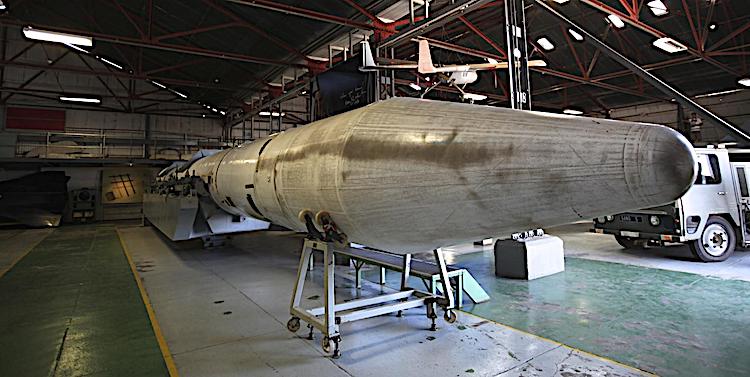By J Nastranis
NEW YORK (IDN) – As the nuclear weapons and fossil fuel divestment campaigns gather steam, their political impact could be as powerful as the divestment campaign against South Africa in the late 20th Century, which was a critical factor in moving the South African government to end apartheid in 1994, anticipates Thies Kätow, researcher for the World Future Council. [2019-04-13 | P01] CHINESE | JAPANESE | RUSSIAN
There are hardly any signs that such an expectation will be realized and the campaign under way would persuade heavily armed nuclear states to disarm. Yet South Africa remains a shining example of a country that went from developing its own nuclear arsenal to dismantling it and being an outspoken advocate against these weapons of mass destruction.
The Central Asian republic of Kazakhstan also dismantled and destroyed nuclear weapons systems and facilities – but these were inherited Soviet Union when it collapsed.
South Africa reaffirmed its commitment 25 years after scrapping its nuclear program when it took another vital step towards a nuclear-weapons-free-world by ratifying on February 25, 2019 the UN Treaty on the Prohibition of Nuclear Weapons (TPNW) at the UN Headquarters in New York. South Africa had signed the TPNW on September 20, 2017
Uranium-rich apartheid South Africa was interested as early as 1948 in atomic energy, and the mining, trade and energy industry that could be built around it. The government bought its first reactor from the U.S. in 1957.
The apartheid government developed a three-stage deterrence strategy in 1978, fearing a direct invasion or an invasion of South African-controlled Namibia by Soviet-backed forces.
However, as the Nuclear Threat Initiative (NTI) points out, the departure of Cuban forces from Angola, Namibia’s independence, and the dissolution of the Soviet Union enabled South Africa to abandon its nuclear weapons program in 1989. Isolated from the global economy, the government also recognized that South Africa would benefit more from giving up its nuclear weapons program than maintaining it.
Following the dismantlement of South Africa’s nuclear weapons, the national 1993 Non-Proliferation of Weapons of Mass Destruction Act committed South Africa to abstain from developing nuclear weapons.
While officially the purpose of the nuclear explosion program did not change from peaceful to military purposes until 1977, U.S. intelligence reports show that South Africa formally began its nuclear weapons program in 1973.
Initially, heavy international pressure kept them from testing these weapons. But by 1982, South Africa had developed and built its first nuclear explosive device. By 1989, South Africa had 6 bombs, each containing 55kg of HEU (highly enriched uranium), capable of delivering an explosive equivalent of 19 kilotons of TNT.
In 1989, the government officially ended the nuclear program, and South Africa joined the Non-Proliferation Treaty (NPT) as a non-nuclear-weapon state in 1991. By 1994, the International Atomic Energy Agency (IAEA) confirmed that all of South Africa’s nuclear weapons had been dismantled.
South Africa has been champion a world without nuclear weapons ever since. On April 11, 1996, the country joined other African nations to sign the Treaty of Pelindaba to create a Nuclear-Weapons-Free Zone on the African continent.
The African Commission on Nuclear Energy (AFCONE) – established for the purpose of ensuring States Parties’ compliance with their undertakings in the Treaty – is based in Pretoria. On September 24, 1996 South Africa signed the Comprehensive Nuclear Test Ban Treaty (CTBT) and ratified it in 1999.
Besides, South Africa is member of the New Agenda Coalition (NAC) in support of a nuclear weapons free world. The origin of the NAC goes back to June 1998 when the foreign ministers of Brazil, Egypt, Ireland, Mexico, New Zealand, Slovenia, South Africa, and Sweden issued a statement calling for a new nuclear disarmament agenda. (Slovenia later withdrew from the NAC.)
The NAC called for the five nuclear weapon states – USA, Russia, Britain, France, China – and the three nuclear-capable states (India, Pakistan and North Korea) to make an unequivocal commitment to nuclear disarmament and to begin multilateral negotiations that would lead to the elimination of nuclear weapons through a Nuclear Weapons Convention.
Besides, as one of the most vocal state advocates of nuclear disarmament, South Africa supports proposals to create a new legally binding framework containing clear benchmarks and timelines to achieve and maintain a world free of nuclear weapons.
South Africa has continued to stand firmly behind the principle of nuclear disarmament, and became part of a core group of countries pushing the humanitarian initiative to end nuclear weapons since 2012. That initiative grew into a movement for a UN treaty banning nuclear weapons, which led to the adoption of the UN Treaty on the Prohibition of Nuclear Weapons on July 7, 2017.
South Africa was a leader in encouraging negotiations on a UN- proposed nuclear weapons ban treaty at the 71st session of the UN General Assembly.
Against this backdrop, it is not surprising that the 2017 Nobel Peace laureate International Campaign to Abolish Nuclear Weapons (ICAN) has welcomed South Africa’s “continued leadership on nuclear disarmament and hopes its action will inspire other African nations to adhere to the Treaty”.
ICAN recalls President Nelson Mandela’s 1998 address to the UN General Assembly which illustrated the ways in which South Africa challenged the arguments of deterrence used by other nuclear-armed nations:
“We must ask the question, which might sound naive to those who have elaborated sophisticated arguments to justify their refusal to eliminate these terrible and terrifying weapons of mass destruction – why do they need them anyway!
“In reality, no rational answer can be advanced to explain in a satisfactory manner what, in the end, is the consequence of Cold War inertia and an attachment to the use of the threat of brute force, to assert the primacy of some States over others.” [IDN-InDepthNews – 13 April 2019]
Photo: South African nuclear weapon. Credit: The National Interest.




